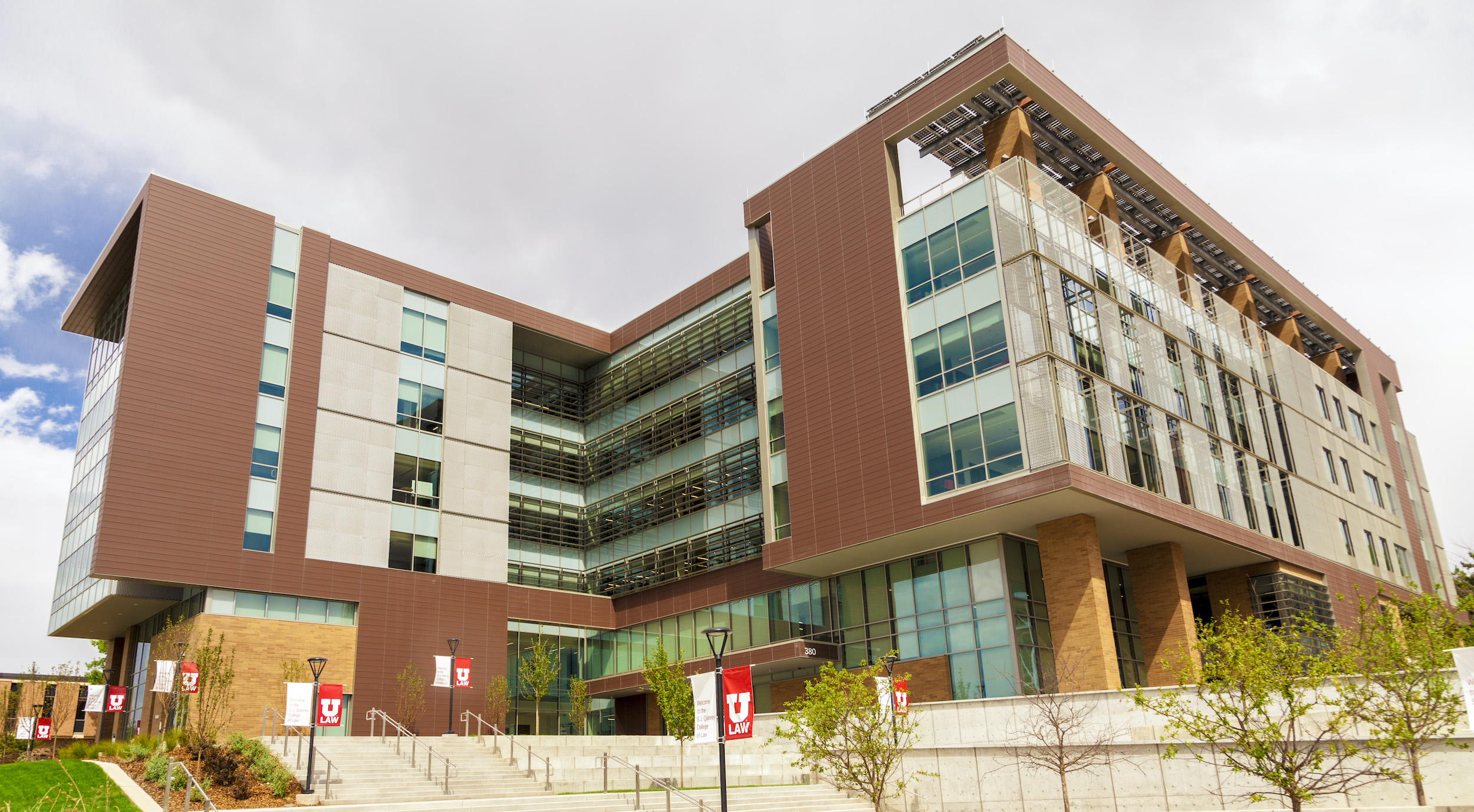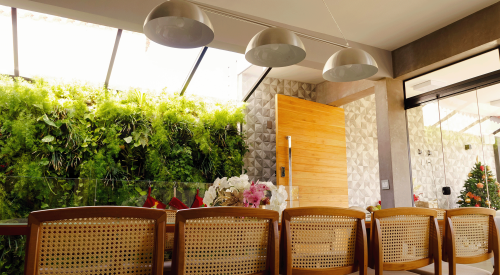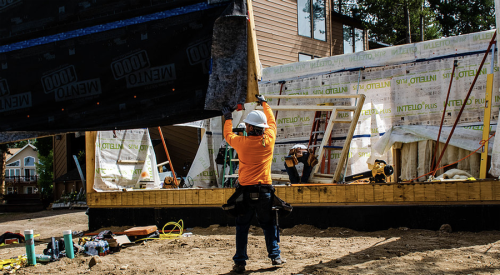The nation’s building industry is experiencing a dramatic renaissance of innovation, driven by concurrent revolutions in digital data capture and green building practices. These trends have accelerated with the COVID pandemic, driving rapid adoption and diffusion of new technology. It is not surprising that solutions from Europe and elsewhere are being utilized in the United States and we expect to see wider scale adoption in the future.
Exciting new building technologies from Europe and industry thought leaders in the United States could gain wider adoption in our future. These concepts incorporate energy efficiency, resource conservation, and automation and modern technologies and can include different levels of integration. Here we explore several such examples, especially sustainable techniques and technologies such as dynamic glass and flexible building skins.
TECHNOLOGICAL LEVELS ZERO TO SIX
Level Zero is a basic “analog” home as a base case with no technology. Level 1 would have some isolated smart technology. Level 2 would consist of a bundled and programmable set of systems. Level 3 would also be programmable, but it would be more anticipatory of occupant needs. Level 4 could be systems which learn, modify, and adapt—we are on the verge of seeing this with some new technologies on the market and being integrated into homes. Level 5 systems could be fully integrated and meet all predictive behavior. And finally, Level 6 could be intuitive smart homes which are interconnected into communities and cities. A good comparative analogy which has become embedded in our lives is cell phone technology and its evolution from 1G, 2G, 3G, 4G to 5G and to 6G.
The following are examples of current, emerging and new technologies, some of which lend themselves to systems integration:
- High performance aerogel insulation—Level 1.
- Transparent solar panels—Level 2.
- Dynamic glass windows—Level 3.
- Remote “needs-sensing” engineered systems (with embedded data sensor feedback loops)—Level 4,
- remote mobile security –cell phone connectivity for remote monitoring
- motion sensing functionality for lighting, security, plumbing and HVAC systems—cell phone enabled
- precision point of use water delivery (trunk, branch, twig)—application of water system design to model human behavior patterns
- power generation and/or energy conservation (think cross-linked solutions between Passive Haus designs with Biomimicry functionality)
- Whole house predictive lifestyle technology with Bau-Biologie solutions—Level 5.
- Community-wide systems integration for resource utilization efficiency—Level 6.
Below we discuss more details for each.
Level 1: Aerogel insulation
Aerogel insulation is a high-performance product which marries thermal functionality with fire prevention properties. With an estimated R-value of well over 10 per inch, which is 3X greater than fiberglass batts, and 3.2X greater than blown cellulose, and with hydrophobic properties, Aerogel insulation presents a new product with construction applications not only in exterior (building) envelopes, but also in fire resistive assemblies.
It is reportedly such a good insulator, that a blowtorch on one side won’t ignite a match on the other side.
Level 2: Transparent solar panels
Transparent solar panels are thin and flexible “see-through” membranes for application on exterior building assemblies and envelopes. These are a topic of research in MIT’s “Center for Excitonics,” an energy frontier research center funded by the US Department of Energy. Another research group at MIT’s “Organic and Nanostructured Electronics Lab” took a different approach, separating wavelengths on the electromagnetic spectrum, some of which are visible light and other wavelengths not visible but still energy producing. The efficiency of these transparent panels is not as great as conventional solar panels, but partially and fully transparent solar panels can be integrated into windows in buildings and cover larger areas.
"Highly transparent solar cells represent the wave of the future for new solar applications," according to expert Richard Lunt, the Johansen Crosby Endowed Associate Professor of Chemical Engineering and Materials Science at MSU. "We analyzed their potential and show that by harvesting only invisible light, these devices can provide a similar electricity-generation potential as rooftop solar while providing additional functionality to enhance the efficiency of buildings, automobiles, and mobile electronics.
In terms of overall electricity potential, Lunt notes that there is an estimated five billion to seven billion square meters of glass surface in the United States. And with that much glass to cover, transparent solar technologies have the potential of supplying some 40 percent of energy demand in the United States—about the same potential as rooftop solar units.
"The complimentary deployment of both technologies," Lunt said, "could get us close to 100 percent of our demand if we also improve energy storage."
Level 3: Dynamic glass windows
Dynamic glass windows can help enhance indoor comfort while providing unobstructed views to the outside. In some applications, dynamic glass windows each with unique IP addresses allow occupant controlled shading through an electro-chemical process inside the glass. This light sensitive window glass can change from clear to tinted on demand to achieve various levels of shading without mechanical systems.
Electromagnetic glass automatically tints when heat from direct sunlight warms the glass. The shading results in a lower solar gain (heat load) for the building. These features combine translucent functionality and energy efficiency in one elegant solution.

Level 4: Remote "needs-sensing" systems
The following Level 4 technology solutions include current market solutions and blue-sky future concepts to explore.
A—Remote mobile security is currently available in nation’s markets as evidenced by numerous products integrating digital image, sound capture, and two-way communications with access controls and emergency service provider notifications.
B—Remote sensing functionality for lighting and HVAC systems integrates with the mobile security features above, allowing control of several house specific operating systems. This is like a programmable 24-hour setback thermostat, to mirror in-home occupant behaviors, which can operate remotely from your cell phone. Sensors can also detect leaks or system trouble signals, alerting users to issues before major damage or complete failure occurs.
C—Precise point of use delivery designs promote water use efficiency and energy conservation, through trunk, branch and twig pipe sizing coupled with a primary (centrally located) and secondary waters heater closer to the point of use. When coupled with a demand pump, water is no longer wasted.
D—Power generation and energy conservation blend solutions above with sustainable building designs. Passive-haus designs are super insulated buildings with “DOIVM” driven design attributes. DOIVM is an acronym from Chris Prelitz defined as Daylighting, Orientation, Insulation, Ventilation and Mass.
Biomimicry implies designing with nature, by replicating and adapting products from nature in building solutions. Ornilux® Bird Protection Glass which mimics the UV reflective qualities of spiders’ webs, which is meant to prevent bird collisions into large windows. Tubercle Airfoils (WaterPower Tubercle Technology), modeled after tubercles or ridges on a whales’ flippers, improve the effectiveness of rotating devices such as wind generation towers, resulting in lower drag and enhanced stable lift.
Level 5: Lifestyle predictive behaviors
Lifestyle predictive behaviors is a programmed set of parameters for all the above referenced technology solutions, which recognize changing needs over time. Community-wide examples include themed, age-specific active adult master-planned communities with a wide array of physical and social recreational programs. Home specific examples include universal designs for aging in place. And even one step further is embracing bau-biologie, or healthy home designs to respect and respond to these age-related lifestyles.
Community-wide technology systems through the combination of the outside internet with inside “intra-nets” promotes communication connectivity. Hotels and condo towers already have internal safety communication systems to alert guests and residences of pending life-threatening events.
Level 6: Community-wide systems
The next stage, Level 6 will further expand our communication needs through more elaborate connections. Social media, for example, has already diversified its platforms to include a myriad of sub-groups for travel, dating, politics, cooking, and so forth… drawing in more users.
The evolution of human settlements is changing dramatically and at ever-increasing speed. These trends are empowered by the existence of private property rights (in hardware and software technology), our legal institutions supporting private property, and advancements in transportation and communication systems.
For centuries, the culture of British and European bell ringers was among the earliest forms of community communication systems (Level Zero). They called us to wake, to pray, to work, to arms, to feast and, in times of crisis, to come together.
“Above all, bells are the sound of freedom and peace as in World War II they hung silently until the day they could ring in the peace.” The architectural design of the church towers was also intended to magnify and send out sound waves to the village’s furthest dwellings. Bell ringers in church towers provided the earliest “internet of the day,” given everyone lived within hearing range of the bells.
Thinking beyond these ideas, American builders are well positioned to take advantage of innovative products and principles from Europe. These solutions are making their way into our commercial and residential construction market. Time will tell if builders will adopt them, but we think they will!
What’s in your tool box?
About the Author
Don Neff is the President of LJP Construction Services. Headquartered in Irvine, CA, LJP Construction Services has been at the forefront of the quality assurance movement on behalf of builder and insurance clients for nearly 25 years, raising the QA bar and pushing the limits of quality control. Since being founded, LJP Construction Services has assisted 2,000 commercial and residential clients worldwide including builders that have constructed more than 100,000 homes throughout the US. More recently, LJP has tracked construction inspection data coast-to-coast over the past two years with its new CaptureQA® digital app, monitoring construction of all building types. LJP’s services also include owner representation, risk management consulting through the entire construction process, and asset management.
For more information, visit www.ljpltd.com.















